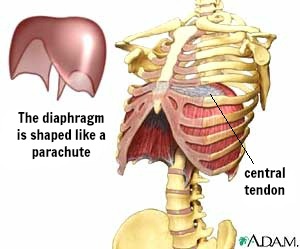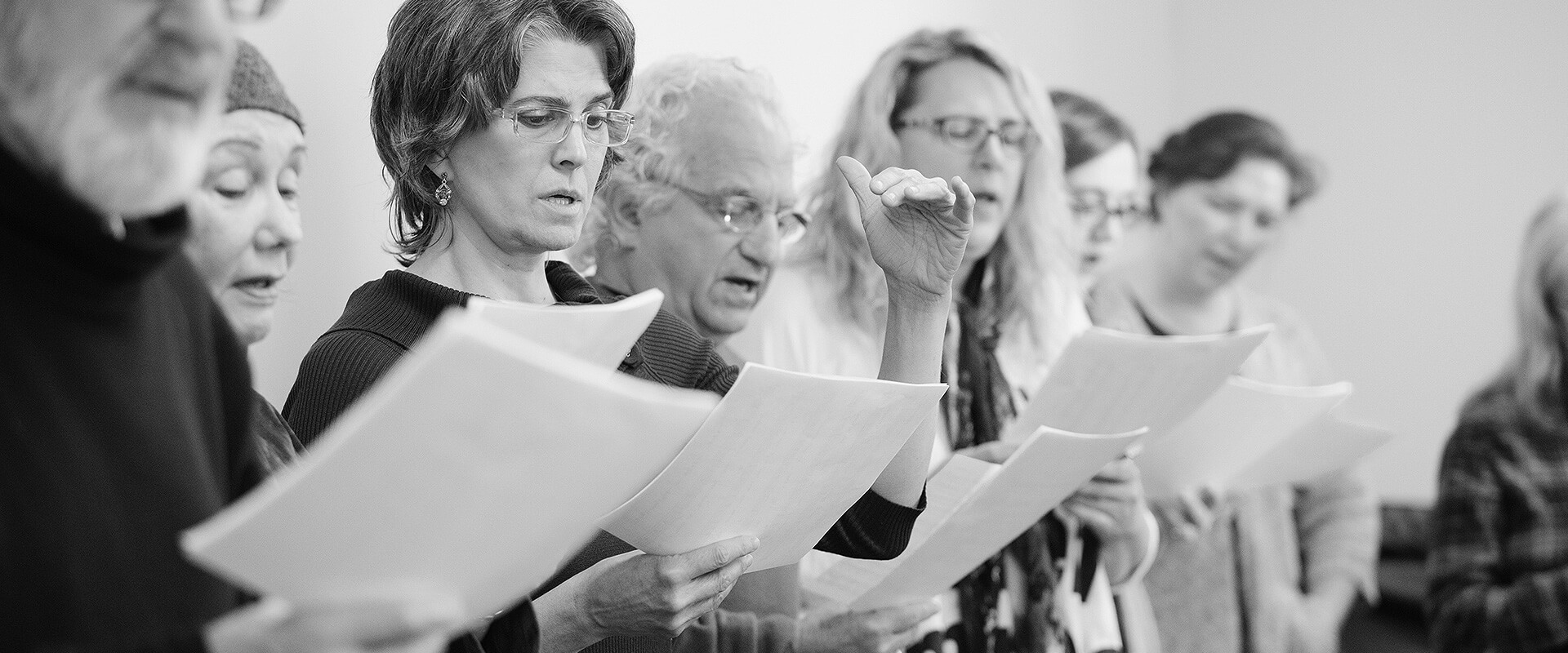The Diaphragm
The primary muscle used in breathing is called the diaphragm. Most singing teachers know this and teach this. However beyond this simplistic knowledge, the diaphragm is widely misunderstood. I haven’t found one student or teacher who understands fully its placement and function, even in scholarly books on Vocal Pedagogy. In singing circles, I’ve heard everything from “sing from the diaphragm” to “pull the diaphragm” to the strangest one of all, a “diaphragmatic attack!” All are misleading jargon meant to evoke something by the teacher. What this something is, remains a bit of a mystery.
If you understand how the diaphragm works, know its placement and attachments you are better off when trying to maximize control over your breath; it becomes clear what it can, and cannot do. You will also avoid being led astray by teachers who promote strange ideas which are a waste of your time, energy and money. Factual knowledge leads you towards developing a proper technique based on real physiology.
 The diaphragm is a muscle shaped like an inverted bowl, mushroom or parchute. It divides the thoracic cage in two parts: above it are the lungs and the heart, below it are all the other organs of the abdomen. It has a central tendon or disk at its highest point (the white part in the right diagram). Its muscular fibers stretch down to the lowest point of the sternum in the front, to the inside of all the lowest ribs and cartilage, extending to the floating ribs at the side and to the lower lumbar vertebrae at the back (L1 to L4) by two pillar tendons. Due to these lowest attachments at the back, the position of your lower back greatly effects the diaphragm’s freedom of movement. If you have a lordosis or sway back, this is a very important point, as your lordosis will limit your ability to get a low, relaxed breath.
The diaphragm is a muscle shaped like an inverted bowl, mushroom or parchute. It divides the thoracic cage in two parts: above it are the lungs and the heart, below it are all the other organs of the abdomen. It has a central tendon or disk at its highest point (the white part in the right diagram). Its muscular fibers stretch down to the lowest point of the sternum in the front, to the inside of all the lowest ribs and cartilage, extending to the floating ribs at the side and to the lower lumbar vertebrae at the back (L1 to L4) by two pillar tendons. Due to these lowest attachments at the back, the position of your lower back greatly effects the diaphragm’s freedom of movement. If you have a lordosis or sway back, this is a very important point, as your lordosis will limit your ability to get a low, relaxed breath.
You can easily prove this above point to yourself. Stick your bum out and arch your back. Now breathe in! Your breath will be high and tight with little or no movement at the waist. Now straighten your back, bend your knees, tip your pelvis under and breathe in again. It will be a remarkably different breath; more comfortable, low and relaxed with movement all around. I give specific exercises to teach this type of breath with the view to incorporate it into your daily life. Once your body experiences this freedom of breath it will not want to breathe in any other way.
Breathing in, contrary to popular belief, does not expand the ribcage per se. The ribcage is a boney structure attaching to the sternum by cartilage in the front and directly to the spine at the back. Cartilage is flexible tissue, but not elastic. The ribs, when relaxed, make a downward angle. The diaphragm’s movement causes an upward rotation of the ribs. It is this upward rotation that gives the feeling of expansion. The lowest ribs, sometimes called the floating ribs, can expand, as they are not attached in the front, which is why you feel more expansion at the waist with a good breath, than you do higher up. Some teachers call this expansion at the waist your tire and they say to sit on it. I never felt my waist was a tire, so this image didn’t work for me. I prefer breathe and stay open, but whatever images work well for you, are fine with me. These are points that become more clear with time and practice. While experiencing these sensations you will develop your own vocabulary to describe what’s happening.
The diaphragm’s movement happens in two stages when contracting: firstly, it both compresses the organs that lie beneath it and puts pressure on the abdominal wall. Once fully compressed, the central tendon reaches a stable point, and secondly, further contraction of the diaphragm cause the ribcage to rotate upward. In so doing, the diaphragm makes a downward & outward movement which creates a vacuum in the lungs and air enters them. Inhalation or ‘breathing in’ is the only active job of the diaphragm, a point which is widely misunderstood in general. In the body, most muscles are paired in order to permit contrary motion (i.e. biceps and triceps). Each muscle of the body only works in one direction. The diaphragm, however, has no pair. It contracts while you breathe in (goes down) and relaxes while you breathe out (comes back up). It has no active function, therefore, in normal speech or in singing because, in this phase, it is relaxing. In normal breathing, exhalation or ‘breathing out’ is done by the rotated rib cage falling back down to its neutral position while the diaphragm takes a little holiday.
Three things will improve the movement of the diaphragm: good posture including a comfortably high chest position (more specifically the sternum), releasing the lower back if it is swayed, a tonus in the lower abdominal muscles (lower transverse) (see Abdominals) so that the organs of the belly can be compressed. These points need to be integrated into your general posture on a daily basis so that some muscles relax where needed and do not interfere with a low breath while other muscles tighten as needed. Your overall breathing will improve which will reduce stress and give you an added sense of well-being. You will benefit from these advantages all the time, not just when singing.
For more information or to book a private lesson, please go to the contact page.
 Montreal Voice Coach
Montreal Voice Coach